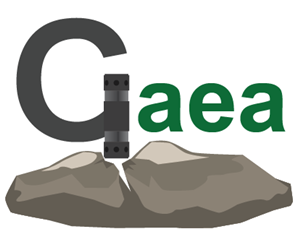Deep hole blasting technology is an efficient blasting method widely used in mines, quarries, and large earthwork projects.
New technology: O2 rock demolition system
Link:
Deep hole blasting technology is an efficient blasting method widely used in mines, quarries, and large earthwork projects. The following is a detailed explanation of the several charging structures mentioned and their technical points:
1. Continuous charging structure:
Applicable hole depth: greater than 8 meters.
Detonation point: two, usually set at both ends of the charge column.
Advantages: simple operation and easy implementation.
Disadvantages: The charge column is relatively concentrated in the middle of the hole, and the explosives near the bottom of the hole and the hole mouth have little effect, which is easy to produce large pieces of waste rock at the hole mouth.

Technical points:
Ensure the reliability of the detonation network and avoid blind shots.
Control the length of the charge to distribute the explosion energy reasonably.
2. Segmented charging structure:
Advantages: Increase the overall height of the charge column in the hole, which can reduce the generation of large pieces of waste rock at the hole mouth.
Disadvantages: The construction operation is relatively complicated, and the amount and position of each section need to be precisely controlled.
Technical points:
The selection of segmented positions should be optimized according to the hardness of the rock and the structural surface.
Each section of the charge needs to be isolated with spacing materials (such as gun mud, cardboard, etc.) and ensure that the detonation network is connected correctly.
3. Bottom hole interval charging structure:
Technical points:
Leaving a certain interval at the bottom of the hole can make the explosion wave better act on the bottom rock of the hole and improve the blasting effect.
The selection and placement of the spacing material should be determined according to factors such as the hole diameter and rock properties.
4. Mixed charging structure:
Charging method: high-power explosives are used at the bottom of the hole and ordinary explosives are used at the top.
Technical points:
High-power explosives are used to overcome the clamping effect of the bottom rock of the hole and improve the blasting efficiency.
The use of ordinary explosives at the top can reduce costs, and at the same time, the generation of large pieces can be reduced by reasonably designing the charging structure.
The amount of explosives in the upper and lower parts needs to be accurately calculated and distributed to ensure the blasting effect.
When implementing deep hole blasting, the following points should also be noted:
Hole network parameter design: including hole diameter, hole depth, hole spacing, row spacing, etc., which need to be comprehensively considered according to factors such as rock properties and explosive performance.
Blocking length: Reasonable blockage can ensure the full effect of the explosion gas and improve the blasting effect.
Safety warning: Ensure the safety of the blasting operation area, set up warning lines according to the prescribed safety distance, and take necessary safety measures.
Environmental protection: Take effective measures to reduce the impact of blasting operations on the environment, such as controlling dust and noise.
The application of deep hole blasting technology requires professional technical knowledge and practical experience to ensure the safety, efficiency and environmental protection of blasting operations.





